|
I'm the CTO and Co-Founder of OpenEyes, where we're reinventing Commercial Auto Insurance using Computer Vision, Generative AI, and by closing the loop on loss runs. We combine state-of-the-art tech with insurance models to help fleets drive safer and save more, because crashes are expensive, but preventable. Before taking the startup plunge, I spent over a decade at Samsung, most recently leading a brilliant team of ~50 engineers in the automotive algorithms realm. We tackled everything from Image Signal Processing to Machine Learning and Computer Vision. I hold a PhD in Computer Science from Tel Aviv University, where I explored how Neural Networks can dream up images with no supervision. My MSc in the border between Electrical Engineering and Applied Math, also from TAU, was all about sampling theory, and I started my journey at the Technion with a BSc in EE and a BA in Physics. Probably most importantly, and when I'm not knee-deep in pixels or insurance data, I'm a proud but often absent father of three and husband. |
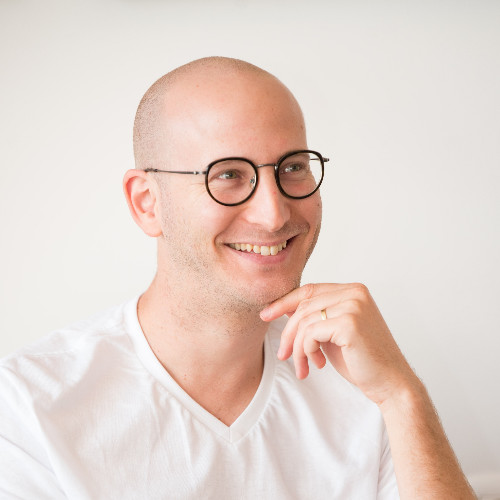
|
|
I'm interested in Computer Vision, Machine Learning, Generative Models and Image Processing |
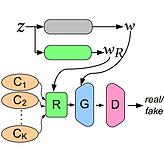 
|
We introduce uMM-GAN, a novel architecture designed to better model multi-modal distributions, in an unsupervised fashion. Building upon the StyleGAN architecture, our network learns multiple modes, in a completely unsupervised manner, and combines them using a set of learned weights. We demonstrate that this approach is capable of effectively approximating a complex distribution as a superposition of multiple simple ones. We further show that uMM-GAN effectively disentangles between modes and style, thereby providing an independent degree of control over the generated content. |
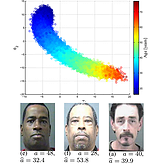 
|
We present a dual Convolutional Neural Network (CNN) and Support Vector Regression (SVR) approach for face-based age estimation. A CNN is trained for representation learning, followed by Metric Learning, after which SVR is applied to the learned features. This allows to overcome the lack of large datasets with age annotations, by initially training the CNN for face recognition. |
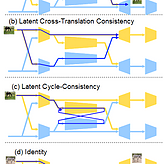 
|
We introduce a novel architecture for un-paired image translation, and explore several new regularizers enabled by it. Specifically, our architecture comprises a pair of GANs, as well as a pair of translators between their respective latent spaces. These cross-translators enable us to impose several regularizing constraints on the learnt image translation operator, collectively referred to as latent cross-consistency. |
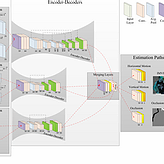 
|
In this paper we propose IM-Net: an interpolated motion neural network. We used an economic structured architecture and end-to-end training with multi-scale tailored losses. In particular, we formulate interpolated motion estimation as classification rather than regression. IM-Net out-performs previous methods by more than 1.3dB (PSNR) ona high resolution version of the recently introduced Vimeo triplet dataset. Moreover, the network runs in less than 33msec on a single GPU for HD resolution. |
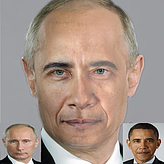 
|
We present a method for determining which facial parts (mouth, nose, etc.) best characterize an individual, given a set of that individual’s portraits. We introduce a novel distinctiveness analysis of a set of portraits, which leverages the deep features extracted by a pre-trained face recognition CNN and a hair segmentation FCN, in the context of a weakly supervised metric learning scheme. Our analysis enables the generation of a polarized class activation map (PCAM) for an individual’s portrait via a transformation that localizes and amplifies the discriminative regions of the deep feature maps extracted by the aforementioned networks. A user study that we conducted shows that there is a surprisingly good agreement between the face parts that users indicate as characteristic and the face parts automatically selected by our method. We demonstrate a few applications of our method, including determining the most and the least representative portraits among a set of portraits of an individual, and the creation of facial hybrids: portraits that combine the characteristic recognizable facial features of two individuals. Our face characterization analysis is also effective for ranking portraits in order to find an individual’s look-alikes (Doppelgängers). |
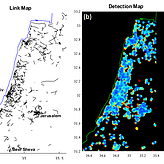 
|
This study demonstrates for the first time the potential to reconstruct the 2-Dimensional humidity field using commercial microwave links which form the infrastructure for data transmission in cellular networks. Water vapor attenuates the waves transmitted by the system and thus these microwave links can potentially form as a virtual network for monitoring the humidity field. The results show a correlation of between 0.6 and 0.92 with root mean square differences ranging from 1.9 to 4.15 gr/m^3 between conventional humidity gauges and the humidity estimates calculated for the same points in space by the proposed technology. The results obtained are the first to point out the improved performance of humidity measurements when using data from multiple microwave links. These results indicate the tremendous potential of this novel approach for improving the initialization of meteorological forecasting models thus potentially improving the ability to cope with the dangers associated with extreme weather. |
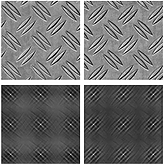 
|
We introduce a structural energy, based on correlations among deep features, which capture the self-similarities and regularities characterizing the texture. Specifically, we show that our technique can synthesize textures that have structures of various scales, local and nonlocal, and the combination of the two. |
 
|
The goal of this article is to present a critical survey of the existing papers and works on this topic. We emphasize the works relating this topic to multidimensional signal processing. The importance of precipitation (rain, sleet, hail, snow, and any other outcomes of the condensation of water vapor that falls by virtue of gravity) is clear to any layman. Whether it is required for the purpose of precisely measuring past precipitation quantities or for generating future predictions, monitoring such phenomena has been of inter-est to humankind since early biblical days. |
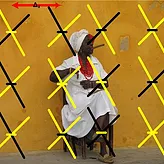 
|
This paper addresses the problem of sampling a two dimensional function (an image) by projections along lines with an arbitrary geometry. By usage of the Papoulis Generalized Sampling Expansion theorem, and addressing the problem of missing samples, we are able to state, for any given sampling realization, which sampling schemes will yield reconstructable images and what sampling (Nyquist) frequency is required for this realization. Finally, we apply this technique on two examples, and demonstrate that with certain geometries the function is reconstructable, while with others it is not. |
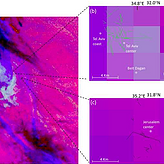 
|
In this paper, a theoretical simulation is presented in which simulated fog patches are introduced into an area where a network of links is deployed. Two-dimensional maps are generated utilizing the simulated microwave network to represent sensitivity thresholds for fog detection at three different frequencies: 20, 38, and 80 GHz. Real-data measurements of fog are also demonstrated using 38-GHz band links. The results indicate the vast future potential of commercial microwave links as an opportunistic system for monitoring fog. |
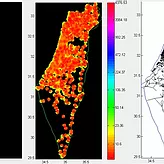 
|
In this paper we discuss the different problem, of detecting rain fields, using measurements from a given set of microwave links. By considering the process in which the CWN data is provided, and by exploiting the power law which describes the relation between the microwave signal attenuation and the rain rate per km, we develop an algorithm which generates maps depicting the minimal detectable rain rate. |
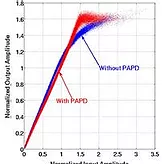 
|
We demonstrate a single-stage 90-nm CMOS power amplifier (PA) for 2.3-2.7-GHz WiMAX (802.16e) band applications. |
|
|




